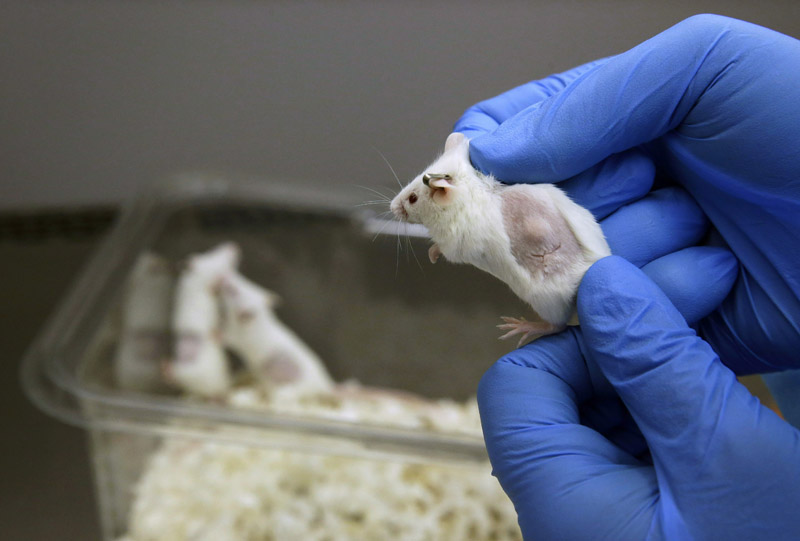Medical scientists at the University of Calgary have taken steps to minimize the impact on mice and rats used in their experiments.

The university’s Cumming School of Medicine is outfitted with a small MRI that researchers use as they test possible treatments for cancer, strokes and multiple sclerosis.
“It’s one of the premier ones in Canada,” said Jeff Dunn, director of the school’s Experimental Imaging Centre.
“Anything under 500 grams fits in there, so mostly rats and mice. We use those in medical research obviously for preclinical assessment, how the disease progresses and possibly even more importantly if the treatment is functional.”
The MRI has been in use since 2004. The lab is also equipped with a blood gas analyzer, so tests can be done using blood samples taken from the animals in much the same way they are collected from human patients.
It’s a far cry from when scientists would use rats and mice and have to dissect them at every test stage.
“It really reduces the use of animals in research because, for a time-course study of treatment, we don’t have to do a whole bunch of animals,” Dunn said.
“You can take a small number and follow them over months to see how the treatment is working.”
Any research facility receiving government funding is subject to rules set out by the Canadian Council on Animal Care.
READ MORE: Review clears B.C. animal testing lab of potential conflicts around fish farms
Spokeswoman Sandra MacInnis says the organization wants to ensure animal-based science in Canada takes place only when necessary and that the animals receive optimal care.
“For example, when selecting a research model, they must first consider all possible alternatives to animal models, such as computer or cell-culture models,” she wrote in an email.

The executive director of the Vancouver-based Animals in Science Policy Institute says efforts by the University of Calgary and others to use the equipment are a matter of debate.
READ MORE: Insectary opens at University of Calgary to study leishmaniasis
Elisabeth Ormandy, a former researcher, said putting a mouse under an MRI scanner requires sedation or anesthesia and could be considered a source of distress for an animal since it could happen several times.
“It depends on our own personal ethics,” Ormandy said. “For people who care about that one individual mouse, that (MRI) might still not be OK.”
But she said some people might argue “it’s better to cause a little bit more suffering to one mouse instead of moderate suffering to 10 mice.”
An animal rights organization said there’s no need to use animals in tests at all when computer modelling can be just as useful.
“All things else being equal, certainly hurting and killing fewer animals is better than hurting and killing more animals,” said Jeremy Beckham, research associate with People for the Ethical Treatment of Animals.
But he said that loses the bigger question a little bit.
“There’s not any real basis to think they feel pain any less than, say, a dog or a cat,” Beckham said.
“We’ve bred dogs and cats to be our companions, so we’ve got a little bit more of an emotional attachment to them. But the ethical issues of using rats and mice are staring us in the face just as strongly.”
WATCH: Diabetes is a growing problem but as Su-Ling Goh reports, some U of A researchers have discovered something that could make a difference in the fight against the disease.





Comments